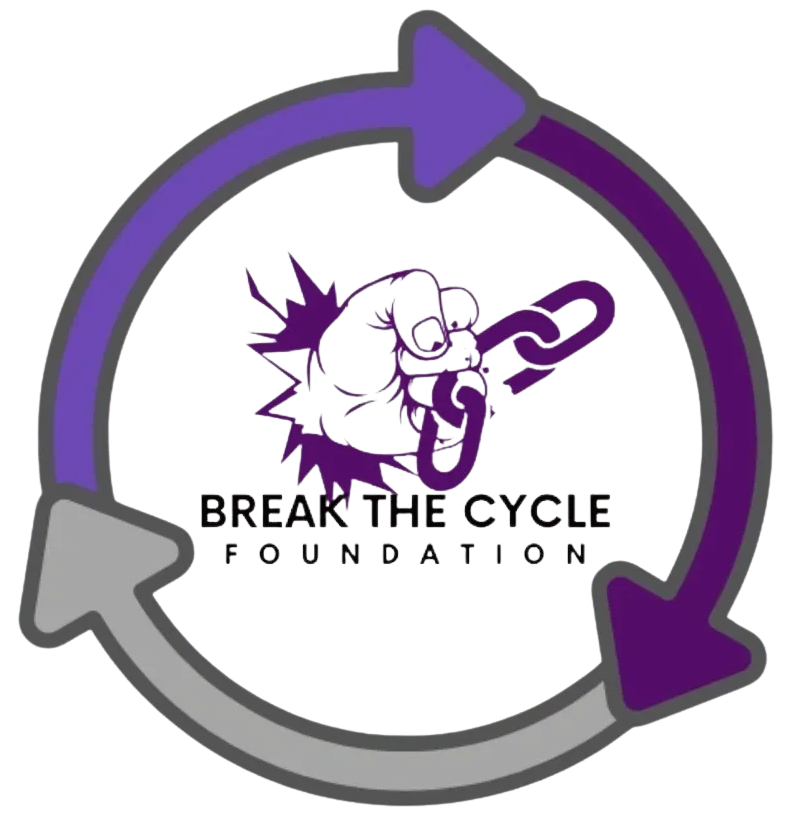The Importance of Social Support
In exploring relapse prevention planning, we must recognize social support as a cornerstone for sustained recovery. The impact of robust social networks extends far beyond the immediate benefits and significantly enhances recovery outcomes.
Impact of Social Support on Recovery
Social support dramatically influences recovery from addiction. Research indicates that greater social support predicts lower substance use rates after treatment, improved treatment retention, increased days abstinent, and higher abstinence self-efficacy. Additionally, it is linked to positive health outcomes and reduced stress for individuals in recovery (NCBI PMC).
For individuals with lower social support, studies show higher severity of drug and alcohol use and greater psychological distress six months after treatment onset. Social networks buttress recovery outcomes through mechanisms such as social control, behavioral choice theory, social learning, and stress and coping. These mechanisms discourage disruptive behavior and promote healthy coping skills during the recovery process.
By engaging in communication and activities with supportive peers or family members, those in recovery are more likely to maintain abstinence and experience an improved quality of life. To learn more about the first steps in addiction treatment, visit our guide on understanding the intake and assessment process.
Role of Social Networks in Addiction Treatment
Participating in a supportive social network is correlated with completing treatment, sustaining greater abstinence rates, and experiencing a higher quality of life. The size and composition of these networks are positively related to these outcomes.
Recovery homes, like Oxford Houses (OH), serve as excellent examples of how social networks can support recovery. These homes provide a strong network of recovery resources that foster social support and retention among residents. The presence of OH members in one’s social network has been shown to predict abstinence, highlighting the powerful impact these networks have as a protective measure against relapse.
Tables such as the one below demonstrate the impact of social support on recovery outcomes:
| Level of Social Support | Substance Use Rate After Treatment | Treatment Retention | Days Abstinent | Abstinence Self-Efficacy |
|---|---|---|---|---|
| High | Lower | Higher | More | Higher |
| Low | Higher | Lower | Fewer | Lower |
Explore our article on group therapy for substance use: how it supports recovery to understand how group settings can further bolster your social support network.
Incorporating social support within relapse prevention planning not only aids in recovery but also ensures a comprehensive approach that addresses emotional, psychological, and social needs. If you’re developing or revising a relapse prevention plan, consider how integrating social support can enhance its effectiveness.
Understanding Relapse Prevention
Stages of Relapse
Relapse is a process rather than an event, and it unfolds in three distinct stages: emotional, mental, and physical relapse. Early recognition of the signs and symptoms within each stage can play a crucial role in implementing preventative interventions.
Emotional Relapse
During this phase, individuals might not be consciously thinking about substance use, but their behaviors and emotions set the groundwork for a relapse. Common signs include isolation, poor sleep or eating habits, and skipping support group meetings.
Mental Relapse
In this stage, a person struggles internally with the idea of using substances again. They may start fantasizing about relapse, downplay the negative effects of previous use, or actively think about ways to use without getting caught.
Physical Relapse
This is the final stage where an individual actually returns to substance use. Physical relapse is often the culmination of unresolved emotional and mental struggles.
| Relapse Stage | Signs and Symptoms |
|---|---|
| Emotional | Isolation, poor sleep, skipping meetings |
| Mental | Fantasizing, downplaying effects, planning to use |
| Physical | Actual use of substances |
For more information on the definition and treatment of addiction, visit our what is substance use disorder and how is it treated page.
Significance of Relapse Prevention Planning
Relapse prevention planning is essential for long-term recovery from addiction. This plan acts as a roadmap to help individuals identify and cope with triggers that might lead to relapse. It is critical to include core elements such as coping skills, support systems, and monitoring techniques.
Coping Skills for Triggers
Developing coping skills involves understanding and managing emotional, mental, and physical triggers that can lead to relapse. This may include professional coaching, individual counseling sessions.
Support Systems
Building a strong support network through peer support programs like Alcoholics Anonymous, Narcotics Anonymous, or SMART Recovery can provide consistent guidance and mentorship. However, the efficacy of these programs in relapse prevention is varied (NCBI).
Monitoring Techniques
Incorporating various monitoring techniques can help in early detection of substance use. Methods include urine drug screens, breathalyzers, skin monitors, saliva tests, and hair follicle tests (NCBI). Frequent monitoring can inform treatment interventions and help keep individuals accountable. Details on structured counseling and methadone use can be found on our website.
In summary, understanding the stages of relapse and the significance of developing a thorough relapse prevention plan can help individuals sustain long-term recovery. Visit our setting realistic recovery goals page for more insights.
Strategies for Relapse Prevention
Relapse prevention is a critical element in the journey to recovery from addiction. To effectively manage this process, it’s important to employ a combination of strategies including counseling and therapy, medication-assisted treatment (MAT), and incorporating monitoring techniques.
Counseling and Therapy
Counseling and therapy play a crucial role in relapse prevention by providing individuals with the necessary tools to understand and overcome the challenges of addiction. Cognitive-behavioral therapy (CBT) is widely employed in addiction recovery. It helps individuals recognize and change behaviors contributing to substance use while equipping them with skills for long-term recovery. In addition to CBT, other forms of therapy are also beneficial:
- Individual Counseling: Personalized sessions focusing on the specific needs of the individual (individual counseling for addiction: what to expect).
- Group Therapy: Provides social support and shared experiences among peers.
Explore how structured counseling can further help in breaking the cycle of addiction here.
Medication-Assisted Treatment
Medication-assisted treatment (MAT) combines the use of medications with counseling and behavioral therapies. This approach is effective in treating substance use disorders and sustaining recovery. Medications like disulfiram, naltrexone, acamprosate, methadone, and buprenorphine are commonly used to prevent relapses of alcohol and opioid use.
| Medication | Use | Effectiveness |
|---|---|---|
| Disulfiram | Alcohol Use Disorder | Reduces the desire to drink |
| Naltrexone | Alcohol and Opioid Use Disorder | Blocks euphoric effects of alcohol/opioids |
| Acamprosate | Alcohol Use Disorder | Reduces cravings |
| Methadone | Opioid Use Disorder | Reduces withdrawal symptoms (the benefits of methadone in opioid treatment programs) |
| Buprenorphine | Opioid Use Disorder | Reduces cravings and withdrawal |
For guidance on deciding if methadone maintenance is right for you, learn more here.
Incorporating Monitoring Techniques
Monitoring is another key aspect of relapse prevention planning. Various forms of monitoring, including urine drug screens, breathalyzers, skin monitors, and saliva tests, provide objective evidence of abstinence. These tools are critical in many interventions and help ensure that individuals remain accountable for their recovery journey.
Overview of Monitoring Techniques:
| Monitoring Technique | Application |
|---|---|
| Urine Drug Screens | Detects recent drug use |
| Breathalyzers | Measures blood alcohol concentration |
| Skin Monitors | Continuous alcohol monitoring |
| Saliva Tests | Detects drug use over a short period |
Incorporating these monitoring methodologies can provide valuable feedback and enhance the effectiveness of relapse prevention strategies. For additional tips and strategies, visit our page on setting realistic recovery goals with your care team.
By combining counseling and therapy, medication-assisted treatment, and monitoring techniques, we can create a comprehensive approach to relapse prevention. These strategies are fundamental components of an effective relapse prevention planning: core elements to include.
Developing a Relapse Prevention Plan
A comprehensive relapse prevention plan is essential for individuals recovering from addiction, especially those with unique challenges that need targeted strategies. Let’s delve into the core elements to include in an effective relapse prevention plan.
Components of a Relapse Prevention Plan
Creating a robust relapse prevention plan involves several key components:
-
Identification of Triggers: Recognizing physical, emotional, and environmental triggers is vital. This process involves understanding situations, people, or feelings that may lead to cravings or relapse. For more information on understanding triggers, visit our guide on what is substance use disorder and how is it treated.
-
Coping Mechanisms: Implementing effective coping strategies such as mindfulness, relaxation techniques, and healthy distractions helps manage triggers. These techniques could include meditation, breathing exercises, or engaging in hobbies (Gateway Foundation).
-
Structured Support Systems: Integrating individual and group counseling sessions provides continuous support. Our article on individual counseling for addiction: what to expect offers detailed insights.
-
Medication-Assisted Treatment (MAT): For individuals with opioid use disorders, medications like methadone can be beneficial. Learn more about the benefits of methadone in opioid treatment programs.
-
Wellness and Lifestyle Planning: Incorporating healthy lifestyle choices such as regular exercise, balanced nutrition, and adequate sleep fosters overall well-being and aids in recovery.
-
Relapse Action Plan: Developing a step-by-step action plan to follow in case of a relapse is crucial. This could include contacting a counselor, seeking medical help, or joining a support group.
Coping Skills for Triggers
Developing coping skills to handle triggers is a fundamental aspect of relapse prevention. Here are several techniques:
-
Mindfulness and Relaxation Techniques: Practices such as mindfulness meditation and yoga help in reducing stress and increasing self-awareness.
-
Cognitive Restructuring: Altering negative thought patterns through positive self-talk and rational thinking can mitigate the impact of triggers.
-
Healthy Distractions: Engaging in constructive activities like exercise, art, listening to music, or spending time with loved ones diverts attention from cravings (Addiction Center).
-
Social Support and Networking: Building a supportive network of friends and family is crucial. Participation in peer support programs can enhance recovery. Our article on group therapy for substance use: how it supports recovery provides further insights.
| Coping Skill | Description |
|---|---|
| Mindfulness Meditation | Techniques to increase awareness and reduce stress |
| Cognitive Restructuring | Changing negative thoughts to positive ones |
| Healthy Distractions | Activities that divert attention from cravings |
| Social Support | Building supportive relationships |
Understanding and implementing these coping skills will help maintain sobriety and prevent relapse. Additionally, setting realistic goals with your care team plays a crucial role in the success of a relapse prevention plan. Visit our guide on setting realistic recovery goals with your care team for more information.
Incorporating all these components and coping strategies into a personalized relapse prevention plan ensures a structured path towards long-term recovery and minimizes the chances of relapse.
Peer Support in Relapse Prevention
Peer support plays a crucial role in helping individuals maintain their recovery from substance use disorder. Various programs and therapies provide essential support, empathy, and guidance, which are integral to successful relapse prevention planning. Let’s explore how peer support programs and relapse prevention therapy contribute to this process.
Role of Peer Support Programs
Peer support programs like Alcoholics Anonymous (AA), Narcotics Anonymous (NA), and SMART Recovery offer structured environments where individuals can gain support from others who have experienced similar struggles. These programs include frequent meetings, mentorship, and guidance to assist those in recovery.
Key features of peer support programs include:
- Frequent Meetings: Regular group meetings provide a consistent support system and reduce feelings of isolation.
- Mentorship: Experienced mentors guide newer members through their recovery journey.
- Shared Experiences: Members share personal stories and coping strategies, fostering a sense of community.
Despite the valuable support they provide, evidence for the efficacy of these programs in preventing relapse is limited (NCBI). Nevertheless, many individuals find these programs beneficial as part of their overall [relapse prevention planning: core elements to include] strategy.
Benefits of Relapse Prevention Therapy
Relapse prevention therapy (RPT) is an evidence-based approach designed to help individuals recognize triggers and develop strategies to avoid relapsing. RPT can be incorporated into both individual and group therapy, focusing on building the skills necessary for long-term recovery success.
Benefits of RPT include:
- Identification of Triggers: Therapy helps individuals recognize emotional, mental, and physical cues that may lead to a relapse.
- Coping Strategies: Developing effective coping mechanisms is a central part of RPT, aiding in managing triggers and stressors.
- Supportive Environment: Group therapy sessions provide a supportive space to share experiences and learn from others’ coping strategies (group therapy for substance use: how it supports recovery).
Key Elements of RPT
- Trigger Recognition: Identifying situations, people, or feelings that may prompt substance use.
- Coping Mechanisms: Developing strategies to manage stressors without resorting to substance use.
- Relapse as a Process: Understanding that relapse often starts with emotional and mental cues before physical relapse occurs.
- Continuous Learning: Viewing relapse as a learning opportunity rather than a failure, readying oneself for renewed dedication to sobriety (Addiction Center).
Combining the support from peer programs and RPT can significantly enhance [relapse prevention planning: core elements to include], offering a robust framework for maintaining recovery. For more details on creating effective treatment plans, explore understanding the intake and assessment process.
By integrating these components, individuals can better navigate their recovery journey, effectively managing triggers and maintaining long-term sobriety. For those interested, how structured counseling helps break the cycle of addiction offers additional insight into the benefits of structured therapy in relapse prevention.
Implementation and Aftercare
Successful recovery depends not only on effective treatment but also on a well-structured aftercare plan. Implementation of a relapse prevention plan plays a crucial role in maintaining long-term sobriety. Here, we outline the critical components involved in transitioning from treatment and setting boundaries for a sustainable lifestyle.
Transitioning from Treatment
Transitioning from a structured treatment environment to everyday life requires careful planning and comprehensive support systems. We emphasize developing a relapse prevention plan to manage potential triggers and navigate through them safely.
| Key Elements | Description |
|---|---|
| Identifying Triggers | Recognize personal triggers such as stress, certain people, or environments that could lead to relapse. |
| Support System | Establish a network of accountable partners, sponsors, family, and friends who support recovery. |
| Professional Coaching | Engage with a recovery coach to develop effective strategies for managing triggers. |
| Post-Discharge Plan | Outline steps and resources needed after leaving the treatment facility. |
For more information on the intake and assessment process, visit understanding the intake and assessment process.
Setting Boundaries and Lifestyle Changes
Setting boundaries and making significant lifestyle changes are essential for avoiding relapse. Cutting ties with old habits, including certain social circles and environments, lays the groundwork for a healthier, sober life.
| Aspect | Action |
|---|---|
| Boundaries | Clearly define limits with friends and associates who may encourage substance use. |
| Accountability | Consistently check in with support partners and sponsors to stay on track. |
| Coping Mechanisms | Develop healthy habits such as exercise, hobbies, and mindfulness practices to handle stressors. |
| Lifestyle Changes | Commit to a new routine that avoids past triggers, seeking new social circles that support sobriety. |
To enhance your understanding of structured counseling and its role in preventing relapse, read more about how structured counseling helps break the cycle of addiction.
A comprehensive aftercare plan that includes transitioning strategies, boundary setting, and lifestyle modifications ensures a smoother adjustment to life post-treatment. Understanding these core elements of relapse prevention planning equips individuals with the tools necessary to continue their path to sustainable recovery.







